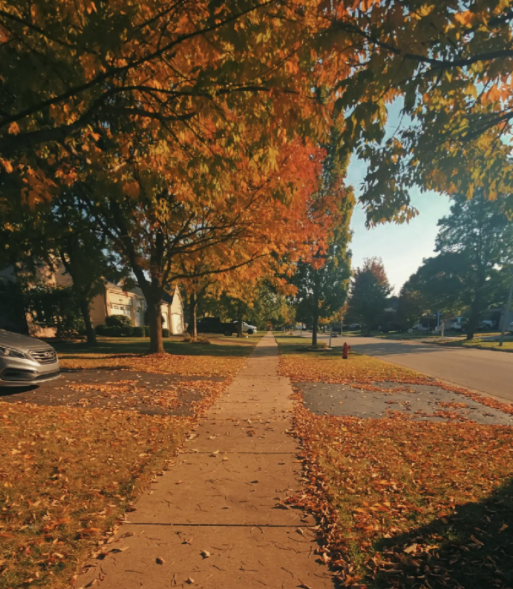Even though it feels like fall has just begun, the weather is already getting colder, the trees are already changing colors and Halloween is here. One of my favorite activities to do in the fall is picking and carving pumpkins. However, as I was carving pumpkins the weekend before, I thought about how much of the pumpkin goes to waste.
When most families carve pumpkins, they just throw away the insides and leave the pumpkin to rot away on their front porch until November 1st, when they throw them away in their trash bins. Before you toss out the leftover pulp and the pumpkin itself, find ways to use them instead.
Though it’s the most disgusting part of pumpkin carving, sorting through the pulp for the pumpkin seeds can result in a tasty snack and food topping. Allrecipes.com, instructs you first to toss, clean and dry the seeds. The website also says to coat the seeds in oil or butter and add your desired seasonings. Then, lay the seeds on a baking sheet and bake at 300 degrees for around 45 minutes, or until golden brown. For sweeter-tasting seeds, you can use cinnamon, maple syrup, honey or brown sugar as a spice. For a more savory taste, you can use chili powder, garlic salt, ranch dressing mix or cumin.
Allrecipes also recommends mixing them into homemade granola, using them as a garnish for squash soup, adding them to trail mix, sprinkling them over baked goods, folding them into hummus or using them as a salad topper.
After the seeds and the pulp are separated, don’t throw away the pulp. They’re edible, too. They can be used in various ways to make different kinds of foods.
Pumpkin is also really good for dogs. Puree and freeze the pumpkin pulp in ice trays for a delicious treat.
According to WebMD, “Pumpkin contains vitamins like A,C and E, as well as minerals like iron and potassium… Due to its high soluble fiber content, pumpkin is very good for your dog’s digestion. If you feed your dog some pumpkin, it will add bulk to their stool. This helps reduce issues with diarrhea.” As for the frozen aspect of the treat, I have three dogs of my own, and they all love ice cubes. The ice cubes could be laced with a poisonous gas, and my dogs would still eat them without a second thought. Because my dogs are pretty typical dogs, I think all dogs would love anything that has a resemblance to a treat.
Another great dish to make with pumpkin pulp is hummus. BBC Good Food says to cut the pumpkin pulp into pieces, put those pieces into a roasting tin with garlic and oil and bake it for 45 minutes at 200 degrees Celsius. Then, place the pumpkin into a food processor with the garlic and any juices left in the tin. Add lemon juice, tahini paste and chickpeas, and blend to a paste.
If hummus isn’t your style, pureed pumpkin pulp can also be used to make a pumpkin soup. Allrecipes calls for chicken stock, pumpkin puree, onion, garlic, salt, whole black peppercorn, whipping cream, thyme and parsley for garnish. Start by boiling the stock, pumpkin, onion, garlic, thyme, salt and pepper. Then, reduce the heat and stir in the cream.
Pumpkin can be an acquired taste, so if you’re not a fan of pumpkin flavors, composting the pumpkin pulp can be better than putting them in a garbage bin.
In A Beginners Guide to Composting, the Australian Government’s Department for Environment and Water describes composting as a way to “[break] down organic matter, which is anything that was once living. This means you are recycling vital nutrients so you can use them to improve the quality of your soil.” Because pumpkins are full of beneficial nutrients and vitamins, they are great for compost bins.
And what about the rind of the pumpkin? The most obvious use of it is for pumpkin carving.
After the pumpkin is cleaned out, you can find a pumpkin carving stencil online or in the Halloween section of a store. After carving pumpkins this past weekend with my mom, I found that it would have been easier to draw a design on the pumpkin with a marker than having to work around a paper stencil.
In terms of carving materials, a metal spoon and steak knives would work to carve the pumpkin, but many stores like Target or Spirit Halloween sell kits that include different knives and a proper pumpkin scooper.
And in November, when people are packing up their skeletons and spiderwebs to make room for their Christmas trees and colorful lights, the carved pumpkins don’t have to go into the garbage. They, like the pulp, can go into a compost bin.
Compost This recommends cutting the rind of the pumpkin into smaller pieces so it’s easier for decomposition. The outside of the pumpkin contains the same nutrients as its pulp, so it’s just as beneficial for the soil.
While pumpkins are famous for being carved, there are many uses for pumpkins that don’t only benefit humans. Animals and the environment can receive much needed nutrients from any part of the pumpkin, so don’t just throw your pumpkins away.











